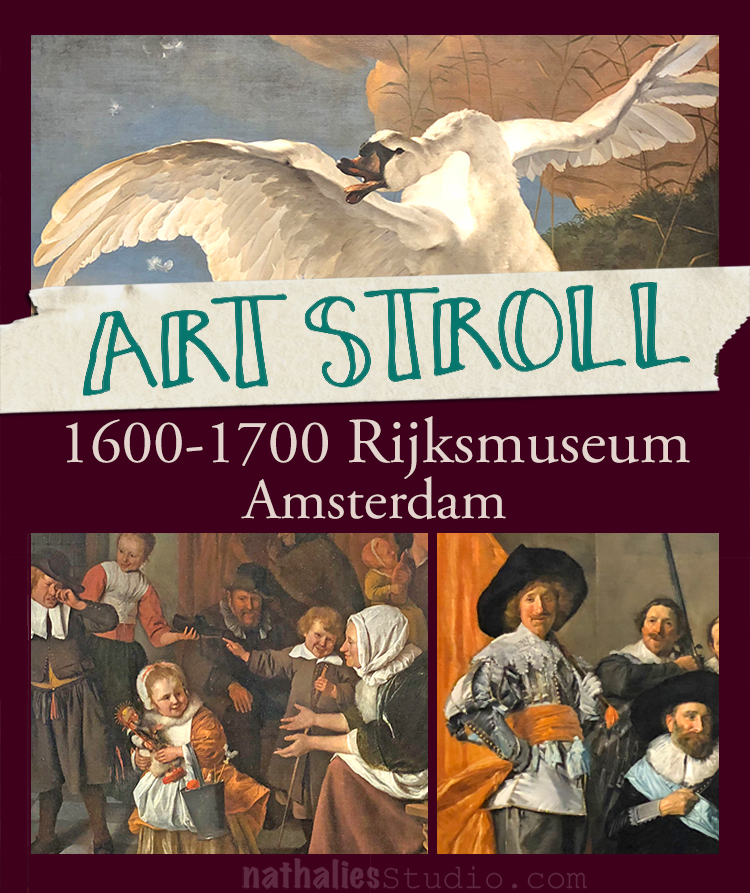
Last month I was lucky enough to go to Amsterdam for a couple days and here is a second Art Stroll from the visit of the Rijksmuseum – this time about the Art from 1600 – 1700
I find a lot of humor in some of the artwork – almost worth making up some memes :)
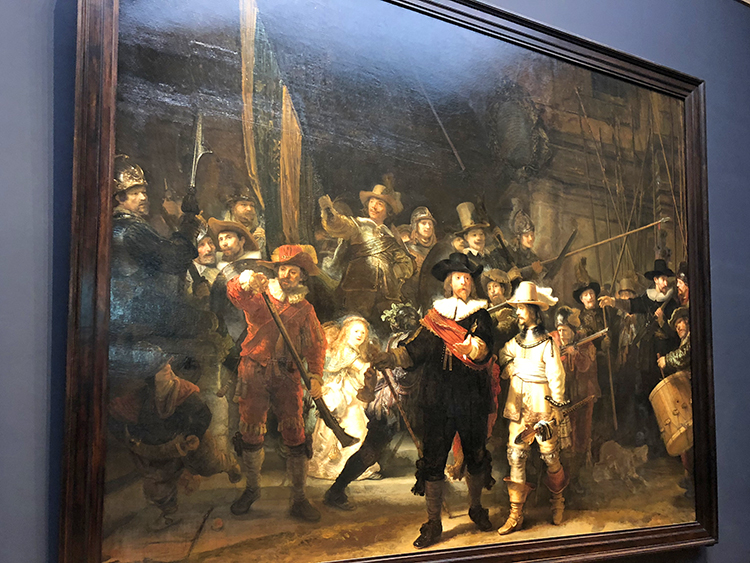
Militia Company of District II under the Command of Captain Frans Banninck Cocq, Known as the ‘Night Watch’, Rembrandt van Rijn, 1642
The only way to take a photo without plugging through other visitors or being obnoxious with a camera. I always try to be very quick and the least distracting for other visitors in a museum when I take a photo after taking the artwork in.
Now- I have no idea why this the triptych below hung in the hall of 1600-1700 – as it is actually an earlier piece- but ..I will show it since it is stunning
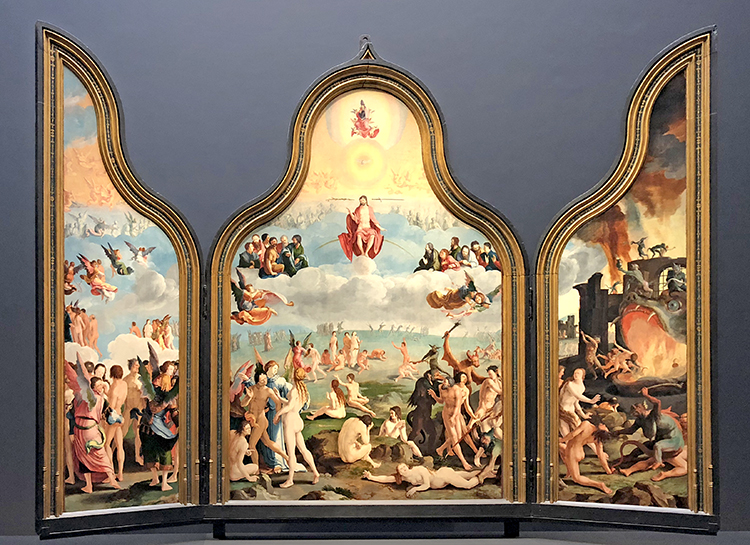
It is the end of the world. The dead emerge from their tombs and are judged by Christ, seated on a rainbow in the sky. He consigns the wicked to hell (right), where perpetual fire and terrifying demons await them. The righteous souls may go to heaven (left): a place of color and light. Peter and Paul, the patron saints of Leiden, are set before a grand imaginary landscape on the outer wings of this altarpiece.Triptych with the Last Judgement outer wings: Saints Peter and Paul, Lucas van Leyden, 1526 – 1527
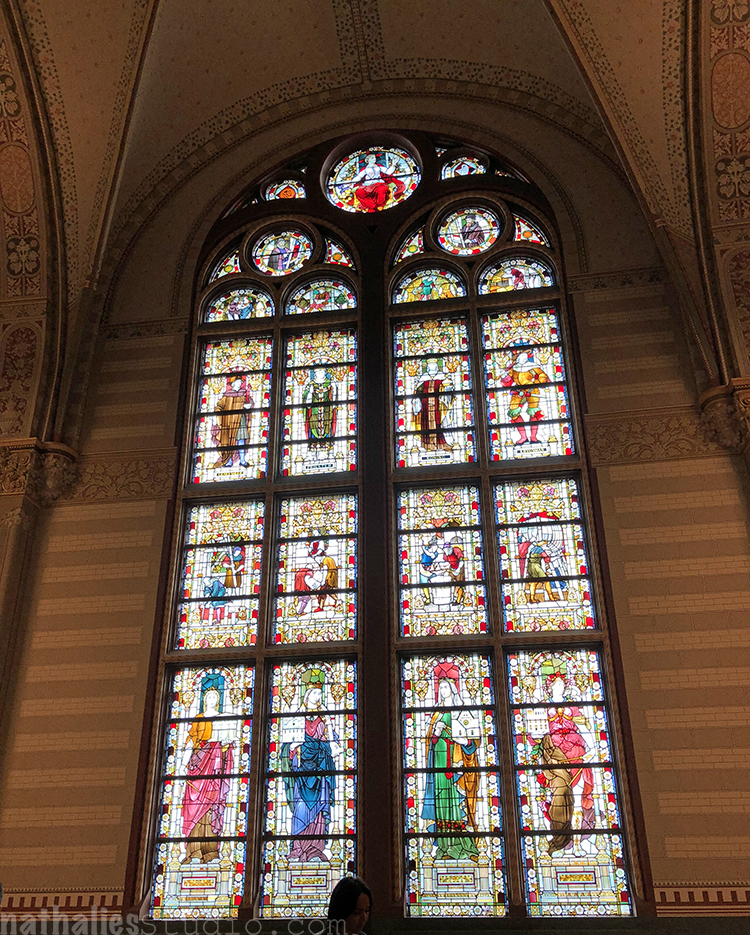
Beautiful window in the hall
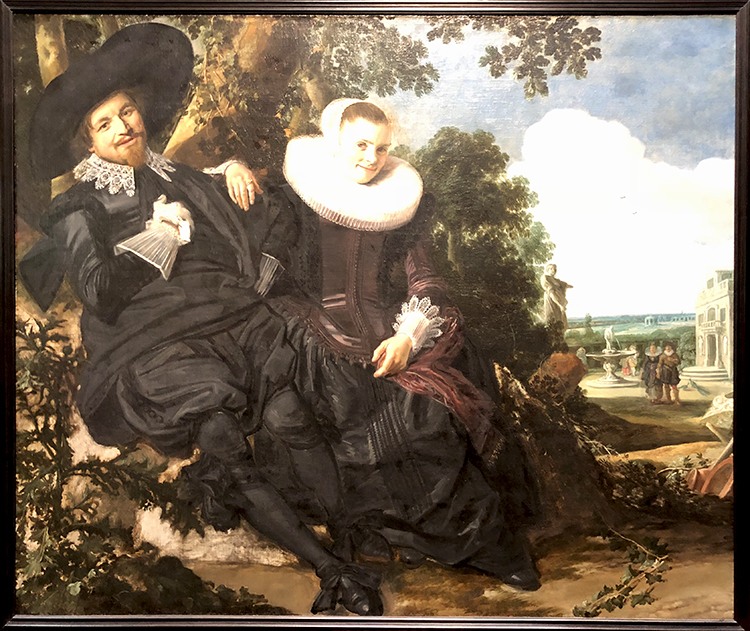
Portrait of a Couple, Probably Isaac Abrahamsz Massa and Beatrix van der Laen, Frans Hals, c. 1622
This happy, smiling pair sits comfortably close to each other. Posing a couple together in this way was highly unusual at the time. It may have been prompted by the sitters’ friendship with the painter and the occasion for the commission – their marriage in April 1622. The painting thus contains references to love and devotion, such as the garden of love at right, and at left an eryngium thistle, known in Dutch as ‘mannentrouw’, or male fidelity.I love the expressions on their faces – you see the painter clearly loved them.
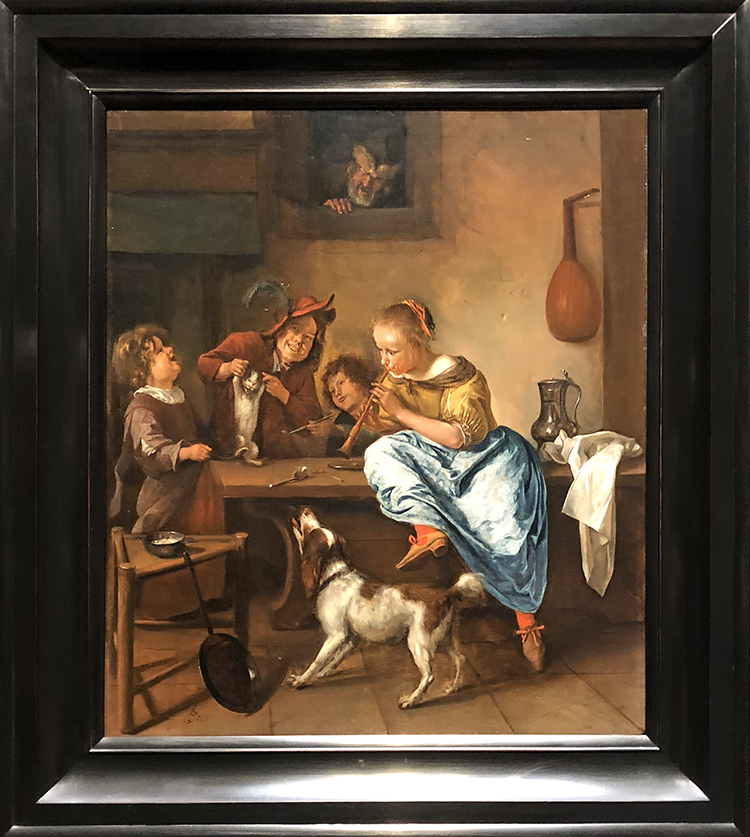
Children Teaching a Cat to Dance, Known as “The Dancing Lesson” Jan Havicksz Steen, 1660-1679, oil on panel
Aweee- poor kitty – I do really hope there was no long posing involved for the poor cat
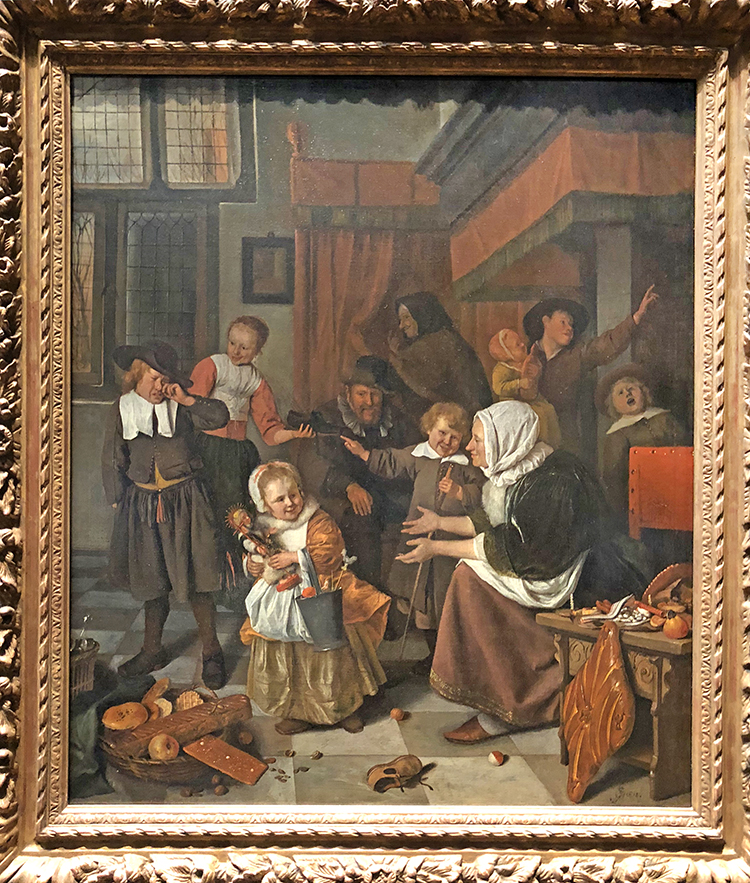
The Feast of St. Nicholas, Jan Havicksz Steen, 1665-1668, oil on canvas
well …guess the boy on the left wasn’t that lucky for St. Nicolas. You usually get a piece of coal and dry twigs if you weren’t good of a kid …guess why I know ? ;)
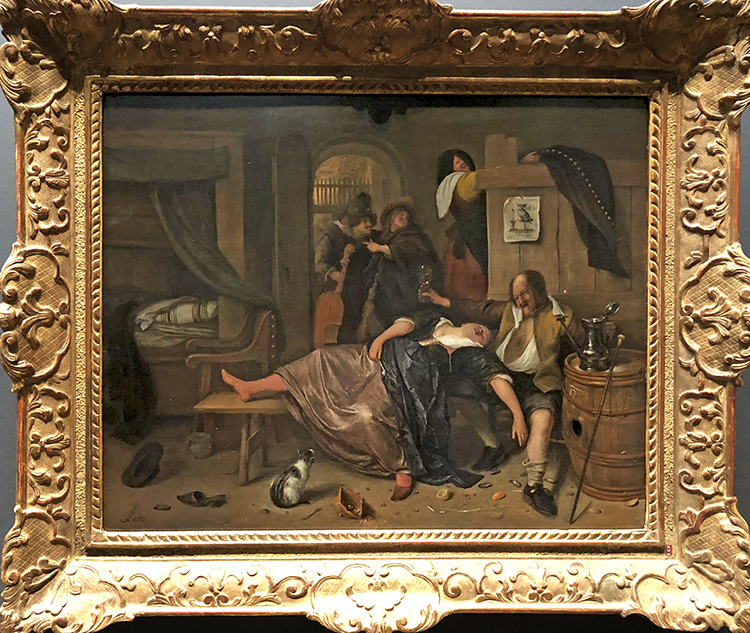
The Drunken Couple, Jan Havicksz Steen, 1655-1665
Of course the cat is just watching the thieves taking their belongings ….LOL
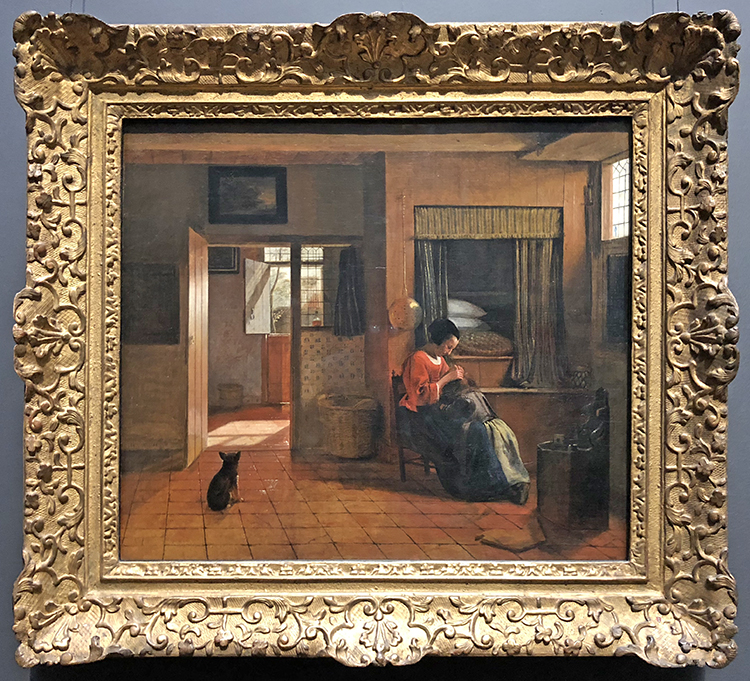
A Mother Delousing her Child’s Hair, Known as “A Mother’s Duty”, Pieter de Hooch, c. 1658-1660, oil on canvas
Oh the joy of being a mother …;)
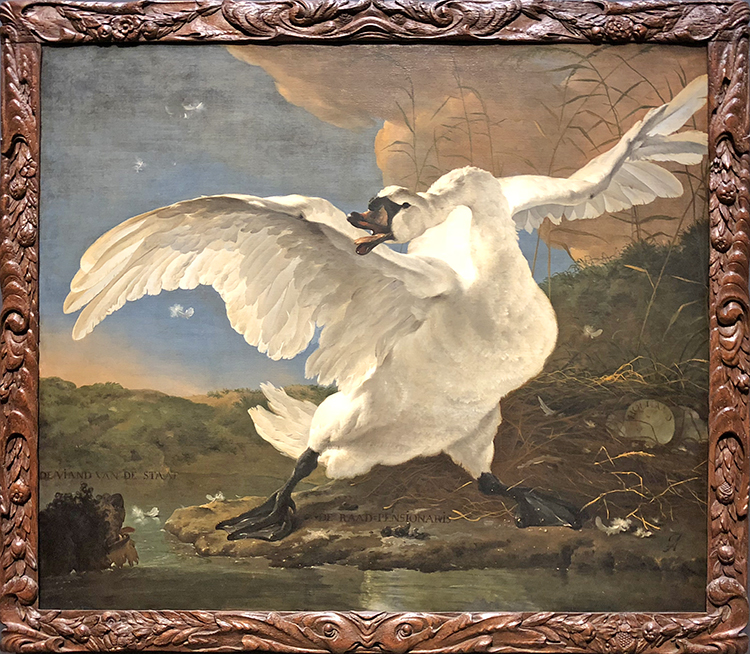
The Threatened Swan, Jan Asselijn, ca. 1650 – oil on canvas
a swan fiercely defends its nest against a dog. In later centuries this scuffle was interpreted as a political allegory; the white swan was thought to symbolize the Dutch statesman Johan de Witt (assassinated in 1672) protecting the country from its enemies. This was the meaning attached to the painting when it became the very fist acquisition the Nationale Kunstgalerij (the forerunner of the Rijksmuseum) in 1880

The Windmill at Wijk bij Duurstede, Jacon Isaacksz van Ruisdael, c. 1660 – 1670, oil on canvas
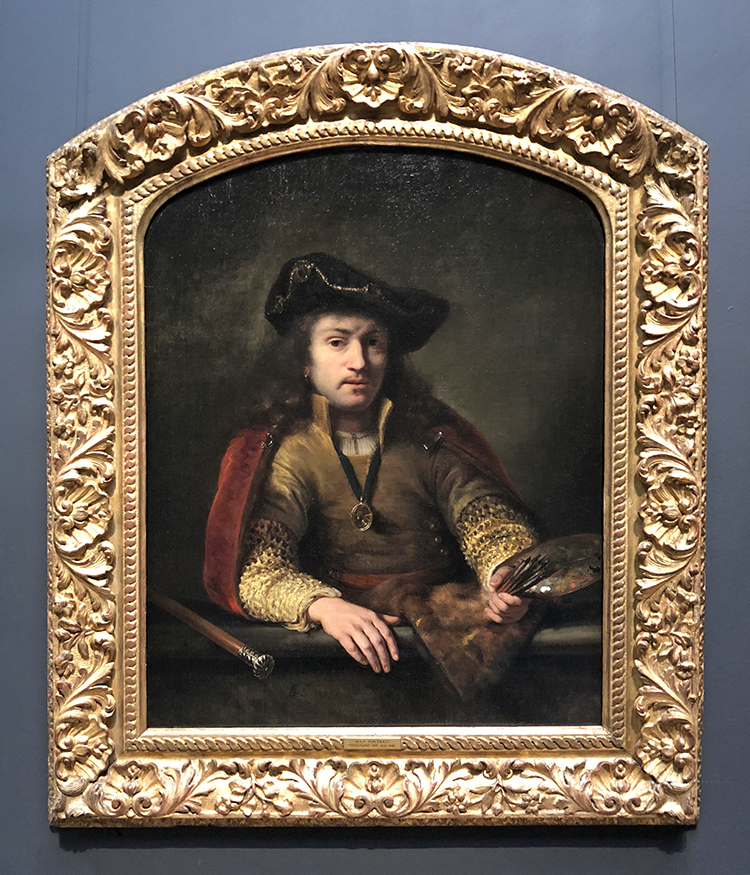
Self-Portrait, Ferdinand Bol , 1653, oil on canvas
Ferdinand Bol was a scholar of Rembrandt. Ever thought about the urge of artists of taking a selfie throughout the centuries? I find it funny that people are so upset that people take selfies with a camera – it is not new, just the tools are different and who actually is capable of doing it.
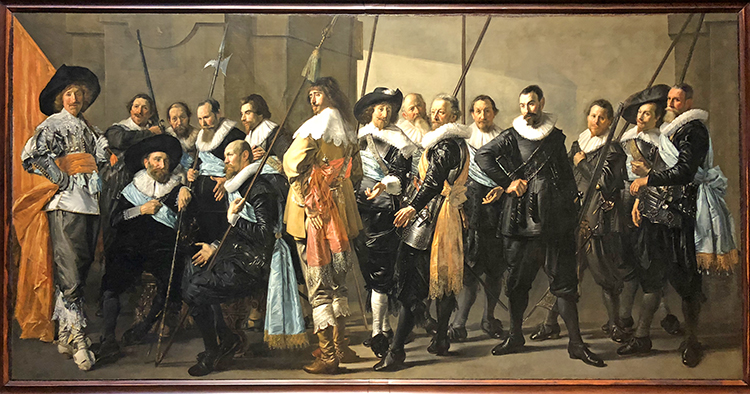

Comments (4)
Laura Weed
| #
I was blessed to visit the Rijksmuseum in the 1980’s (while the rest of my tour did Anne Frank’s House which was just too much for me) and I was absolutely blown away at the size of some of those paintings I had only ever seen in books before. What an immersive experience. Rembrandt is one of my favorites, and I love looking at the expressions on the faces of the people in the backgrounds. So glad you’re sharing this amazing place!
Reply
nathalie-kalbach
| #
It is a gorgeous museum and I am glad we went back again – there is just so much to see :)
Reply
Sue Clarke
| #
Portrait of a Couple is just delightful and so unusual for that time period.
I don’t believe for a minute that you got coal. LOL
The frame around the Swan is gorgeous.
Reply
nathalie-kalbach
| #
hahaha oh I did get coal- believe me ;)
Reply